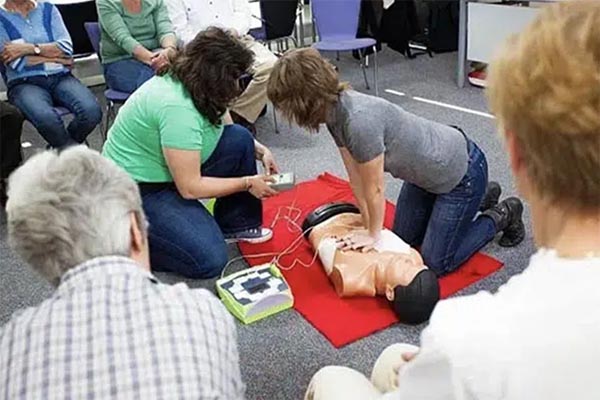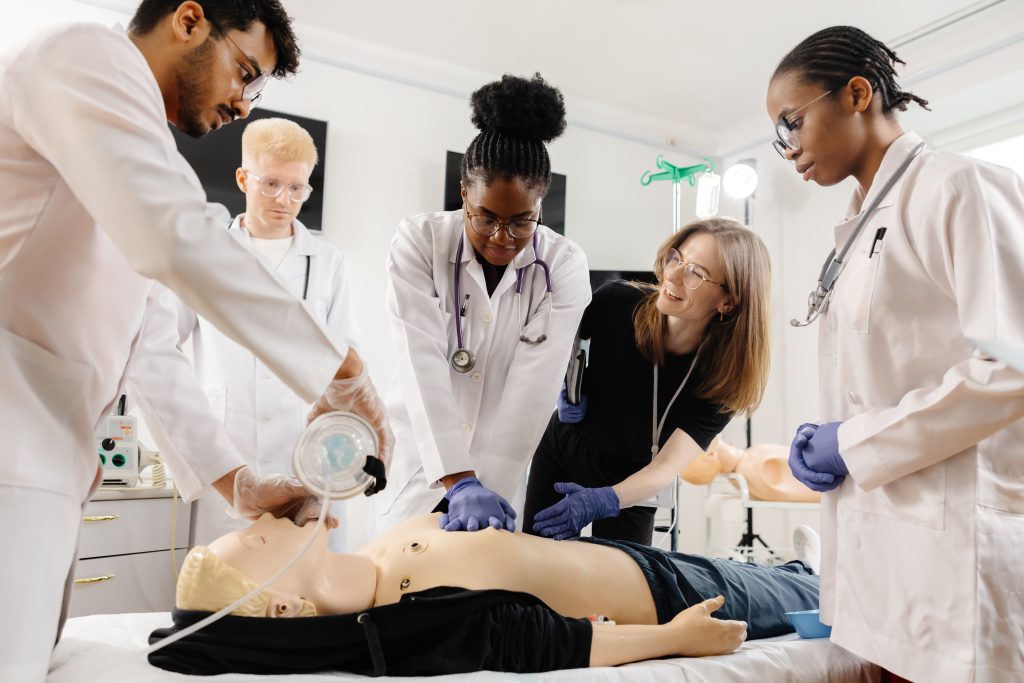
In the heart of Austin, TX, a city known for its vibrant culture and dynamic community, the ability to respond to a medical emergency is a skill that can truly make a difference. Cardiopulmonary Resuscitation (CPR) is a life-saving technique, and for many professionals and everyday citizens, holding a valid CPR certification is not just a good idea—it’s a requirement. However, these certifications don’t last forever. Most expire after two years, and letting your skills lapse is not an option.
Renewing your CPR certification is a crucial step to ensure you are always prepared to act in a cardiac or breathing emergency. It’s an opportunity to refresh your knowledge, update your techniques, and maintain the confidence needed to provide life-saving assistance. The process in Austin is straightforward, with a variety of options to fit your schedule and learning style. This comprehensive guide will walk you through everything you need to know, from understanding why renewal is important to choosing the right class and completing the final steps. By the end, you’ll have a clear roadmap to keep your certification current and your skills sharp.
Why CPR Certification Renewal is Non-Negotiable
A CPR certification is a testament to your ability to respond effectively in a crisis. But why is it so important to renew it? The simple answer is evolution. The field of emergency medicine is constantly advancing. Research leads to new insights, and protocols are updated to reflect the most effective methods for saving lives. What you learned two years ago may have been the gold standard, but today, there might be a more efficient or safer way to perform a rescue.
Renewing your certification ensures that your knowledge is up-to-date with the latest guidelines from leading organizations like the American Heart Association (AHA) and the American Red Cross. It’s not just about getting a new card; it’s about re-engaging with the material, practicing the skills, and solidifying your muscle memory. This renewed practice is what will allow you to act confidently and correctly in a high-stress situation. For many professionals, from healthcare providers to teachers, a current certification is also a legal or professional requirement. Maintaining it protects you and ensures you remain qualified for your role.

Understanding the CPR Certification Renewal Process
The process of renewing your CPR certification is designed to be efficient while still providing a thorough refresher. Unlike the initial certification, which often covers the basics from scratch, the renewal course focuses on reinforcing existing knowledge and introducing new information. The core elements remain the same: a cognitive portion and a skills check.
The cognitive portion can often be completed in a few hours, either in a traditional classroom setting or through an online module. This part of the training reviews critical topics such as the chain of survival, recognizing a cardiac arrest, and the proper sequence of compressions and breaths. The skills check is a hands-on component where you demonstrate your proficiency in performing CPR, using an AED (Automated External Defibrillator), and managing an obstructed airway. This is where your muscle memory is tested and fine-tuned under the guidance of a certified instructor.
The Step-by-Step Guide to Renewing Your Certification in Austin, TX
Renewing your CPR certification in Austin is a simple and accessible process. Follow these steps to ensure a smooth transition from your expiring card to a brand new one.
Step 1: Check Your Certification’s Expiration Date
The first and most important step is to know when your current certification expires. Most certifications are valid for two years. Set a reminder on your calendar for at least a month before the expiration date. This gives you plenty of time to find a class and complete the renewal process without any last-minute stress.
Step 2: Choose Your Renewal Format
CPR renewal courses come in a variety of formats to suit different needs. Your choice will depend on your schedule, learning style, and personal preference.
- In-Person Classroom: This is the traditional method. You attend a class at a designated training facility in Austin with an instructor and other students. This format provides hands-on, direct feedback and allows for real-time interaction. It’s an excellent choice for those who prefer a structured, collaborative learning environment.
- Online Course with a Skills Session: This is a blended learning approach. The cognitive portion of the course is completed online at your own pace. You watch videos, read materials, and take a written exam. Once the online portion is finished, you schedule a separate, short, in-person skills session with an instructor to demonstrate your hands-on proficiency. This is a highly flexible option for busy individuals.
- Blended Learning with a Self-Service Manikin: Some providers offer an even more flexible blended option. The cognitive portion is still online, but the skills check is completed using a manikin at a designated kiosk. The manikin provides real-time feedback, and a webcam monitors your performance. This is a great choice if you have a non-traditional schedule.
Step 3: Find a Reputable Training Provider in Austin
Finding a quality training provider is essential. Look for a provider that offers courses from well-known and respected organizations like the American Heart Association (AHA) or the American Red Cross. These certifications are widely recognized and accepted. Check their class schedules and locations to find one that fits your needs. Ensure the instructors are certified and experienced.
Step 4: Register and Complete the Course
Once you have selected a provider and a class format, register for the course. Pay attention to the course type, there are specific classes for healthcare providers (BLS) and others for a general audience (Heartsaver). Be sure to choose the one that aligns with your professional or personal needs. Complete all required training components, including the cognitive learning and the hands-on skills check.
Step 5: Receive Your New Certification Card
After successfully completing all parts of the course and passing any required tests, you will be issued a new certification card. This card will be valid for another two years. In many cases, the card is issued digitally, so you will receive it via email. Be sure to save a digital copy and print a physical one if needed.
The Role of Practical Skills in CPR Renewal
While the cognitive review is important, the hands-on skills session is the most critical part of the renewal process. During this session, you will be asked to demonstrate your ability to perform compressions at the correct depth and rate, deliver rescue breaths, and operate an AED. An instructor will observe your technique and provide feedback. This is a low-pressure environment designed to help you correct any bad habits that may have developed over time.
For example, you might be over-compressing or not allowing for full chest recoil. The instructor can spot these issues and guide you to perform the skills correctly. This practical application ensures that when faced with a real emergency, your movements will be accurate and effective. This is why a fully in-person or a blended course with a skills session is the best way to renew your certification. Relying solely on a knowledge test is not sufficient to maintain the life-saving physical skills required for CPR.

The Different Types of CPR Certification to Renew
It’s important to know the difference between the main types of CPR certifications. The one you need to renew depends on your profession.
- Basic Life Support (BLS): This certification is specifically for healthcare professionals. It covers advanced topics and is more in-depth than a standard CPR course. If you are a doctor, nurse, EMT, or work in a medical facility, this is the course you need to renew.
- CPR/AED (Heartsaver): This is a general public course. It is designed for non-healthcare professionals such as teachers, coaches, lifeguards, fitness instructors, or anyone who wants to learn life-saving skills. This is the right choice for most people who do not work in a medical setting.
- First Aid: Often combined with a CPR/AED course, this certification covers how to handle common injuries and medical emergencies like burns, fractures, and allergic reactions. If your job requires a First Aid certification as well, you can often find a combined course to renew both simultaneously.
Conclusion
Renewing your CPR certification in Austin, TX is a proactive and responsible choice. It ensures that you are always ready to act in a medical emergency, armed with the most current knowledge and skills. The process is designed for convenience and effectiveness, with a range of options from traditional classroom settings to flexible blended learning. Don’t let your certification lapse. Take the initiative to refresh your skills and maintain your readiness to save a life. The peace of mind that comes with being prepared is invaluable, both for you and for those you might one day help.
Are you ready to renew your CPR certification in Austin, TX? Don’t wait until it’s too late. Contact CPR Classes Near Me today to find the perfect class for your needs and get started on your renewal journey. Stay certified, stay prepared, and stay ready to make a difference.
FAQs about CPR Recertification in Austin, TX
1. How often do I need to renew my CPR certification?
Most CPR certifications are valid for two years. It is recommended to renew your certification before it expires to ensure you have no lapse in your qualifications.
2. Can I renew my CPR certification online?
Yes, you can. Many providers, including those from the American Heart Association and the American Red Cross, offer a blended learning format. This allows you to complete the cognitive portion of the course online at your convenience. However, a hands-on skills session with a certified instructor is always required to complete the renewal process.
3. What is the difference between an initial CPR course and a renewal course?
An initial CPR course is designed for individuals who have never been certified before. It covers all the basic concepts and skills from the beginning. A renewal course is specifically for those with a current or recently expired certification. It focuses on refreshing knowledge, reviewing skills, and updating participants on the latest guidelines, making it shorter and more focused than an initial course.
4. What happens if my CPR certification expires?
If your CPR certification expires, you may be required to take a full initial certification course again, depending on the provider and the length of time since expiration. It’s always best to renew before the expiration date to avoid this.
5. How long does a CPR renewal class take?
The duration of a CPR renewal class varies depending on the format. An in-person class typically lasts a few hours. A blended learning course’s online portion can be completed at your own pace, and the in-person skills session is usually much shorter, often under an hour.

Leave a Reply